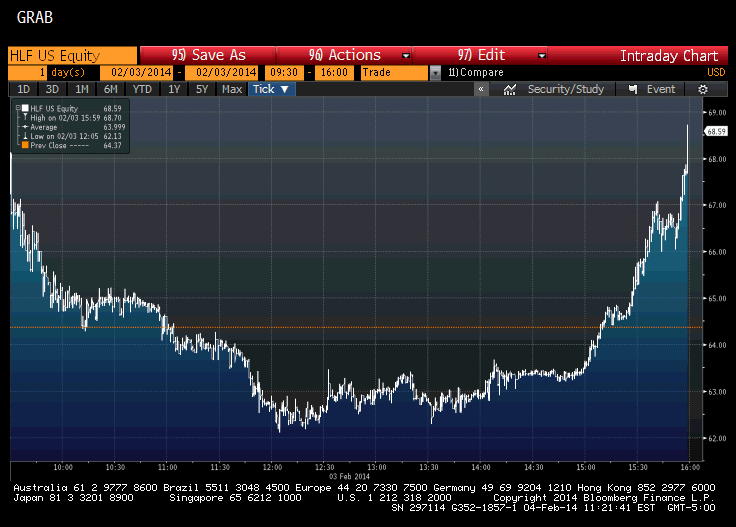Convertible Bond Delivering StockLike Returns
Post on: 27 Апрель, 2015 No Comment

Key Points
- Convertible bonds are on track to register the highest issuance in seven years and post stock-like returns this year, after registering double-digit gains in 2013. Yields on convertibles are closer to the yields on regular corporate bonds even though they carry higher risk. We think convertibles make more sense as part of your equity allocation and not your fixed income portfolio.
Convertible bonds are on track to register the highest issuance in seven years and post strong stock-like returns this year, after registering double-digit gains in 2013. While that may seem attractive for bond investors, we think convertibles make more sense as part of your equity allocation and not your fixed income portfolio.
What’s a convertible bond?
A convertible bond is a type of bond that can be converted to the issuer’s common stock. These bonds share some of the same characteristics of traditional bonds, like a set coupon rate and maturity date. The conversion ratio—or the amount of shares that the bond can be converted into—is typically specified up front.
For example, a corporation might issue a bond with a $1,000 par value and 10 years to maturity. Let’s assume the issuer’s stock trades at $50 and the bond can be converted to 15 shares of the stock. If the bondholder were to convert the bond immediately, it would only be worth $750—15 shares multiplied by the stock price of $50.
Using this example, the stock price would need to rise to $66.67 for the conversion to at least breakeven, since 15 shares multiplied by the potential stock price of $66.67 equals the bond’s par value of $1,000. If the price of the stock rose even more, convertible bond holders would be able to benefit from that further rise.
In other words, when convertible bonds are issued, the stock price would need to rise by a certain amount for the conversion to actually make sense. The price at which the conversion would effectively breakeven is called the conversion price.
New supply continues to grow
Low interest rates and rising stock values generally make issuing convertible bonds an attractive option for corporations. Corporations issued $29.7 billion in convertible bonds through the end of August, an increase of more than 50% from the same period in 2013, when $19.4 billion was issued. 1 If this pace continues through the end of the year, convertible bond issuance will reach its highest level since 2007.
Recent performance has been strong
The Barclays U.S. Convertibles Composite Index has generated a year-to-date total return of 7.8% through September 26, compared to 8.9% for the S&P 500 Index and 4.06% for the Barclays U.S. Aggregate Bond Index. This comes after the same convertible bond index returned 24.4% last year, compared to a loss of 2% for the aggregate bond index. Most domestic fixed income indexes posted negative total returns in 2013.
But don’t let the strong performance fool you—convertible bonds are very susceptible to sell-offs, just like stocks. In 2008, the total return of the Barclays U.S. Convertibles Composite Index was -34.7%—even worse than the return of the Barclays Corporate High-Yield Bond Index.
Low credit ratings for convertibles don’t equate to higher yields
Convertible bonds often offer lower yields than the yields on non-convertible bonds issued by the same company. Investors are generally willing to accept this lower yield, as convertible bonds offer the potential to benefit if the stock price rises above the conversion price.
Convertible bonds are often issued by lower-rated companies that otherwise may need to offer higher yields. In fact, many of the bonds in the Barclays U.S. Convertibles Composite Index aren’t even rated, meaning there is no credit opinion at all from the rating agencies on these bonds. The chart below breaks down the average credit rating of the Barclays U.S. Convertibles Composite Index.
As you can see, only 21% of the convertible bond index is rated investment grade, yet it offers a lower yield than a traditional investment grade corporate bond index.
The average yield of the Barclays U.S. Convertibles Composite Index was 3.05% on September 26, compared with the average yield-to-worst of the Barclays U.S. Corporate Bond Index of 3.10%. 2 The Barclays U.S. Corporate High-Yield Bond Index—an index of sub-investment grade bonds, and likely a better comparison due to the low credit ratings (or lack of credit ratings) of convertibles—offers an average yield of 6.16%.
Most convertible bonds are sub-investment-grade or not rated at all

What’s your outlook for stocks?
Convertible bonds have had a higher correlation with stocks than with bonds
Source: Schwab Center for Financial Research with data from Morningstar, Inc. Correlations represent the 20-year average correlation of rolling 12-month returns from August 1994 through July 2014. Correlation is a statistical measure of how investments move in relation to one another. Indexes represented above are the BofA ML All Convertibles All Qualities Index, Barclays U.S. Aggregate Bond Index, and the S&P 500 Index. Past performance is not indicative of future results.
One key benefit of bonds is the diversification they provide to a portfolio of stocks. But if your bond allocation is heavily weighted toward convertible bonds, your portfolio may not be diversified as you think.
What to do now
Convertible bonds generally offer lower yields than traditional corporate bonds, but they have the potential to generate higher total returns if stock prices rise. We think investors looking for higher yields are generally better off in non-convertible corporate bonds. And if investors are looking at convertible bonds because of the potential for higher returns from rising stock prices, we think this should come from the equity allocation of an investor’s overall portfolio, not the fixed income allocation.
I hope this enhanced your understanding of convertible bonds. I welcome your feedback—clicking on the thumbs up or thumbs down icons at the bottom of the page will allow you to contribute your thoughts. (If you are logged into Schwab.com, you can include comments in the Editor’s Feedback box.)
1 Securities Industry and Financial Markets Association (SIFMA)
2 The yield of the Barclays U.S. Convertibles Composite Index represents the average of the greater of current yield, yield to maturity, or yield to put for each issue, weighted by the market value of each issue. Note that for mandatory convertible bonds, only current yield is used. Similarly with preferreds, yield to maturity is less meaningful and therefore, only the greater of current yield or yield to put is used.
3 As represented by the BofA Merrill Lynch All Convertibles All Qualities Index, the S&P 500 and the Barclays U.S. Aggregate Bond Index using the 20-year average of rolling 12-month total returns from August 1994 through July 2014. Correlation is a statistical measure of how two investments have historically moved in relation to each other, and ranges from -1 to +1. A correlation of 1 indicates a perfect positive correlation, while a correlation of -1 indicates a perfect negative correlation. A correlation of zero means the assets are not correlated.














